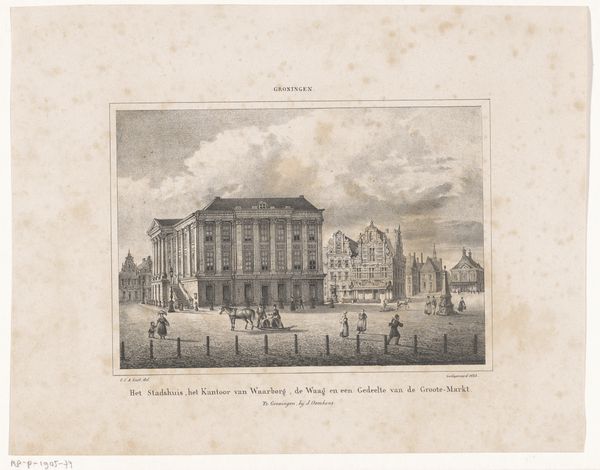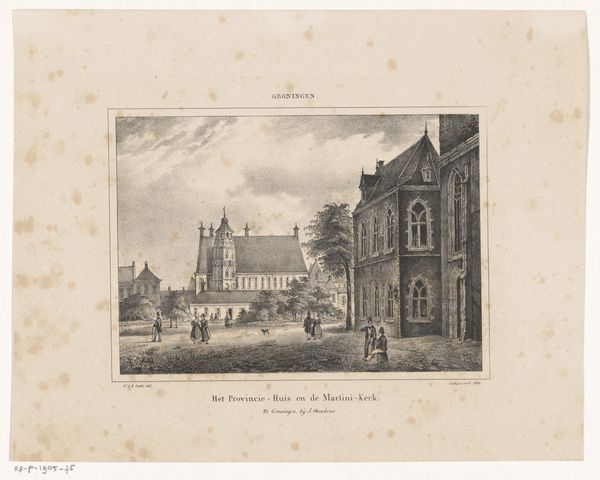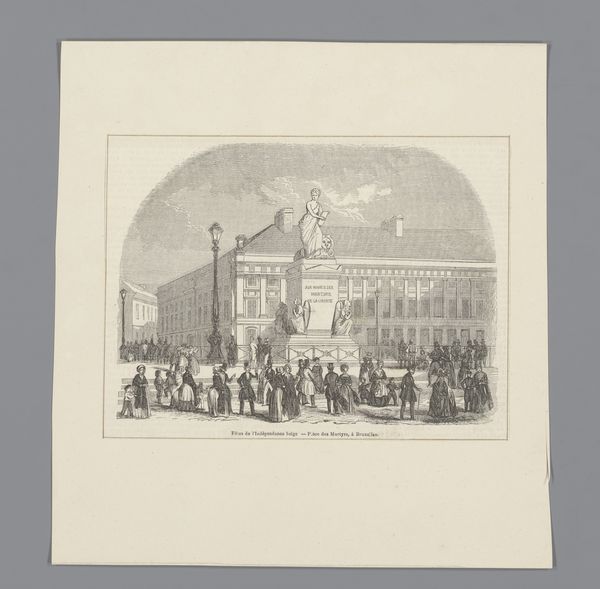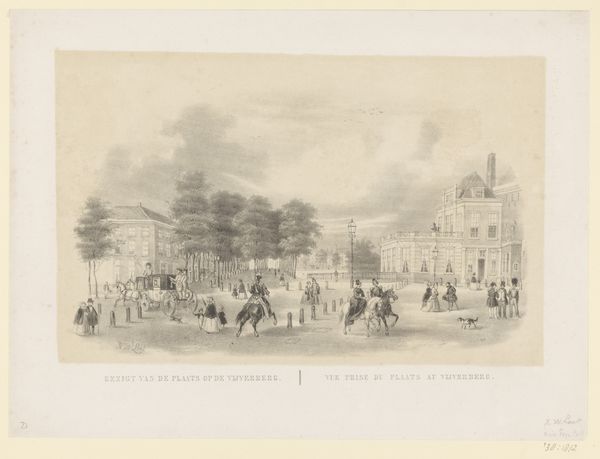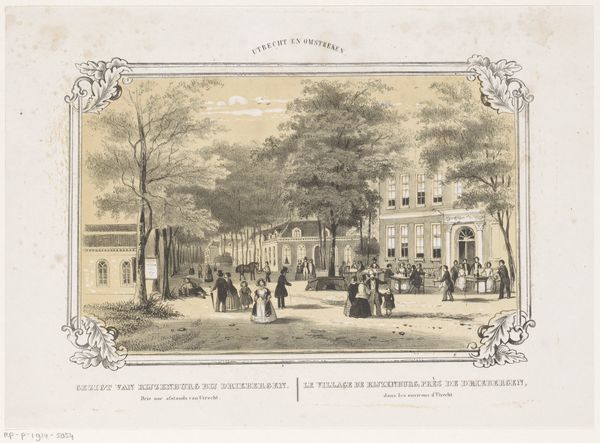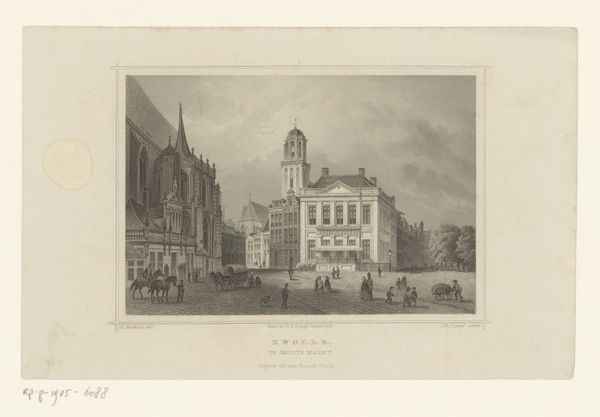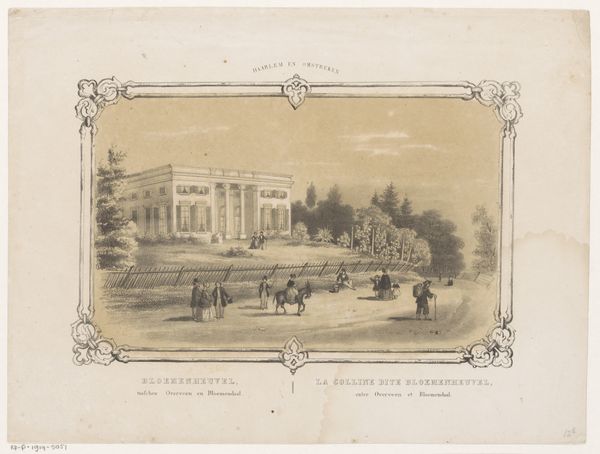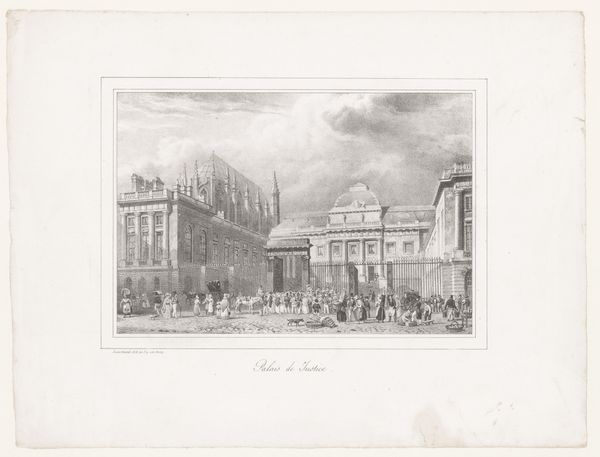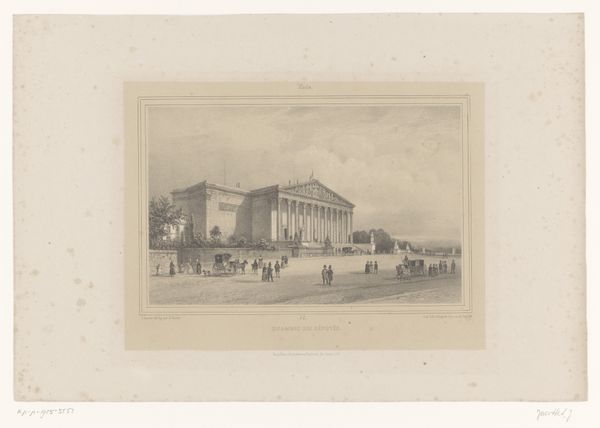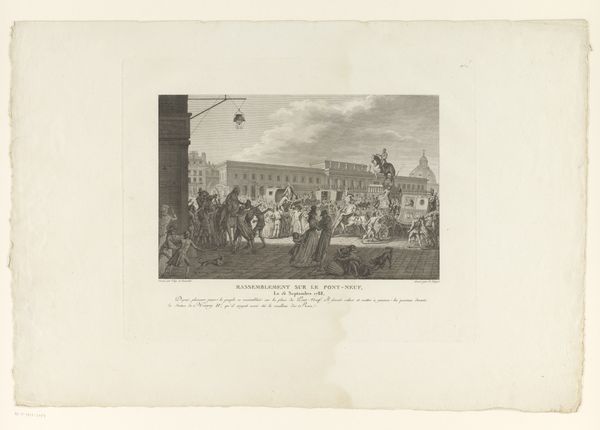
Martinitoren, het stadhuis en de Grote Markt in Groningen 1834
0:00
0:00
drawing, print, paper, ink, engraving
#
drawing
# print
#
landscape
#
paper
#
ink
#
romanticism
#
cityscape
#
pencil work
#
genre-painting
#
engraving
#
realism
Dimensions: height 235 mm, width 295 mm
Copyright: Rijks Museum: Open Domain
Editor: Here we have Carel Christiaan Antony Last's "Martinitoren, het stadhuis en de Grote Markt in Groningen," from 1834. It's an ink and engraving on paper, depicting a bustling cityscape. I’m struck by how much detail is captured using such simple materials. How do you read this piece? Curator: What intrigues me most is the physical act of creating this image. Consider the labour involved in etching such fine lines, and reproducing it. The printmaking process democratizes the image. How many copies were made? Where did they circulate? These are questions tied directly to its material existence. Editor: That's fascinating. So you're thinking about the print not just as an artwork, but as a commodity, produced and consumed? Curator: Exactly. The paper, the ink, the engraving tools – all commodities with their own histories. And look at what’s depicted! A marketplace, full of its own exchange and materials. The artwork becomes a document of the era's means of production and consumption. What’s produced is representative of contemporary means and modes. Editor: So, Last isn’t just showing us Groningen, but also the society that built it? Curator: Precisely. This print, reproduced and distributed, would shape the broader public's image of Groningen, feeding back into its economy and identity. Notice the contrasts of dark and light that define depth, and how that relates to printmaking as an industrial operation. Editor: That's a perspective I hadn't considered before. It changes how I see the artwork – not just a pretty picture, but a record of material culture. Curator: And it invites us to consider our own relationship to images today. How does digital reproduction, with its ease and scale, differ from this older, more laborious process? These prints, at one time common, become more rare as history continues. It raises the issue of obsolescence and what gets preserved through labor, care, and time. Editor: I’ll definitely look at prints differently now, thinking about the labour and materials behind them. Curator: The physical objects tell stories if you learn how to listen.
Comments
No comments
Be the first to comment and join the conversation on the ultimate creative platform.
